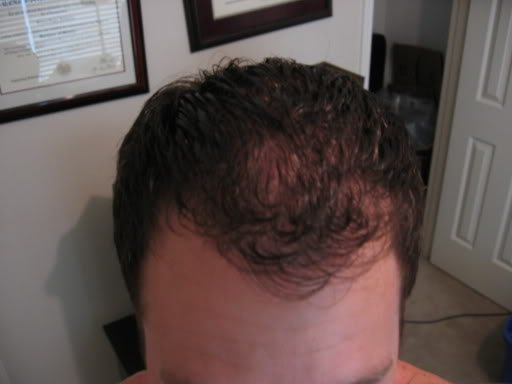antonio666
Senior Member
- Reaction score
- 5
Do you think it is possible to transplant into a norwood 1 with diffuse thinning without damaging existing hair and has any body ever seen a patient who has had this done
gillenator said:I know of no diffused thinner that did not experience shockloss. The more existing hair there is, the more there is to shock out. hair transplants can advanced the loss in a diffused patient. Try using topicals like Toppik as long as you can and hang with the meds.

that pic is from last july or august. my hair has improved since then but it's still like that a bit right behind the hairline when i spike itflimflam said:JayMan how old is that pic? Has you hair improved from that since you started dutasteride? Thats what mine looks like, but at the vertex.
gillenator said:jayman,
You definitely have type 2 diffision that I see. Your hair caliber is still good on the top but have generalized thinning throughout. So IMO, permanent shockloss is less likely because alot of what you have up there right now will grow back in.
